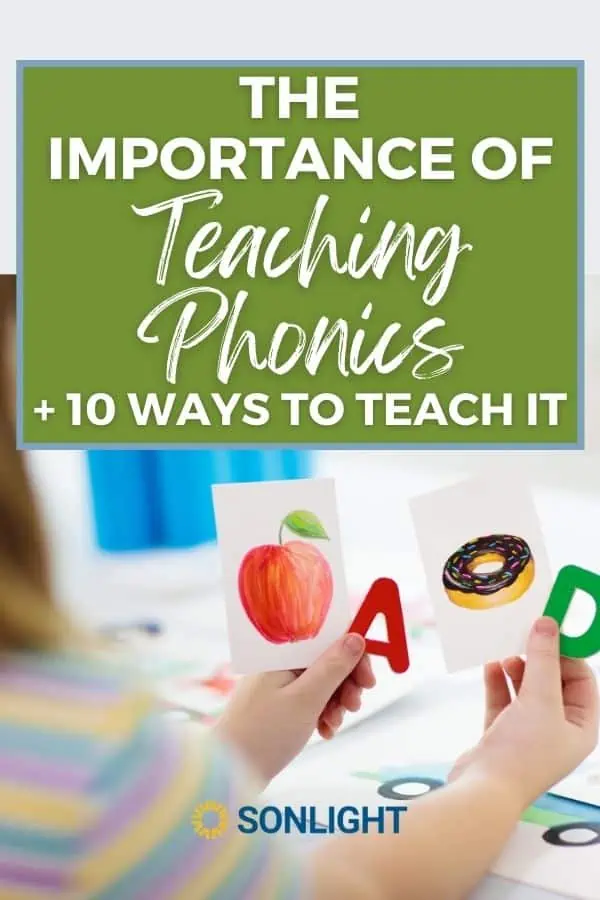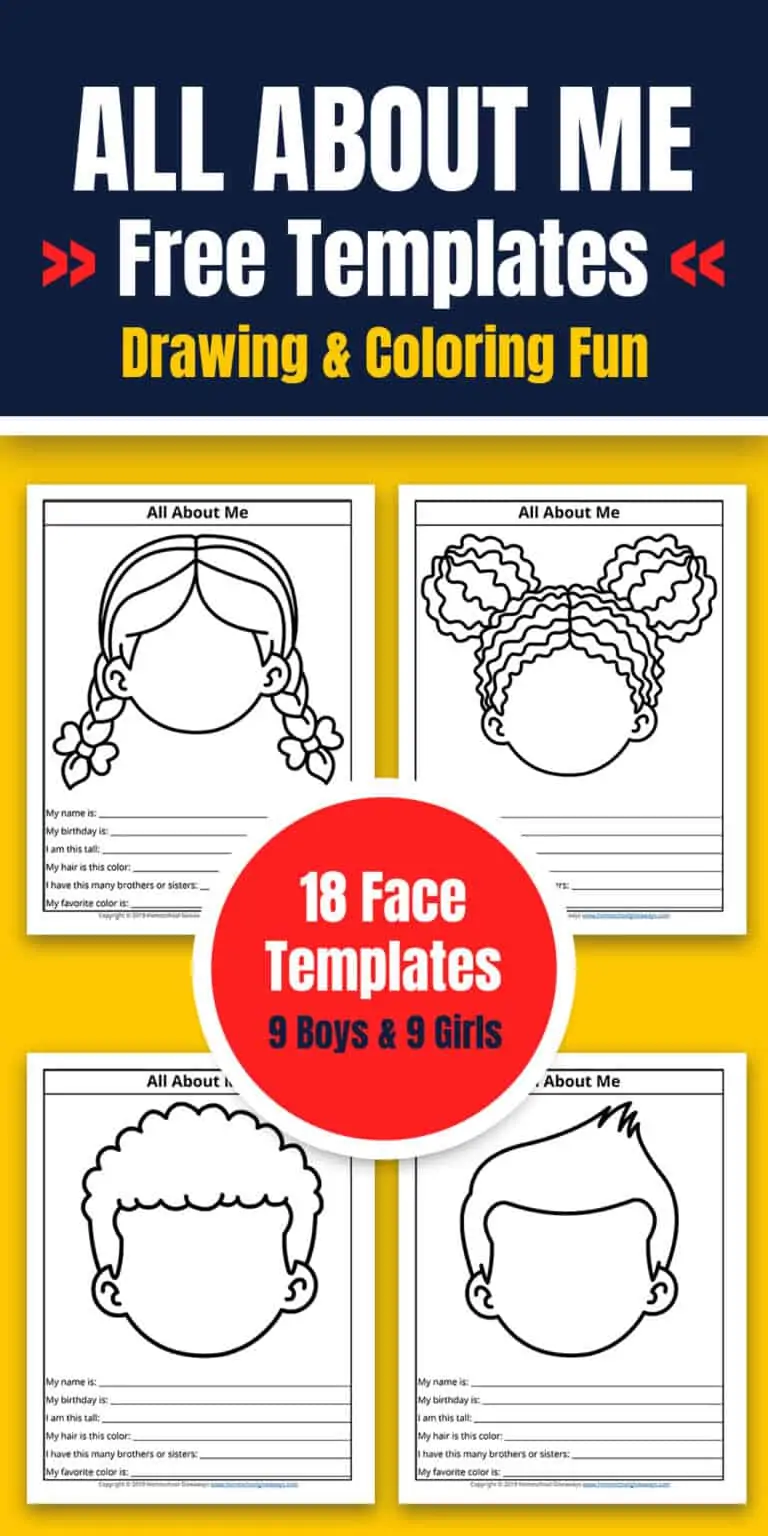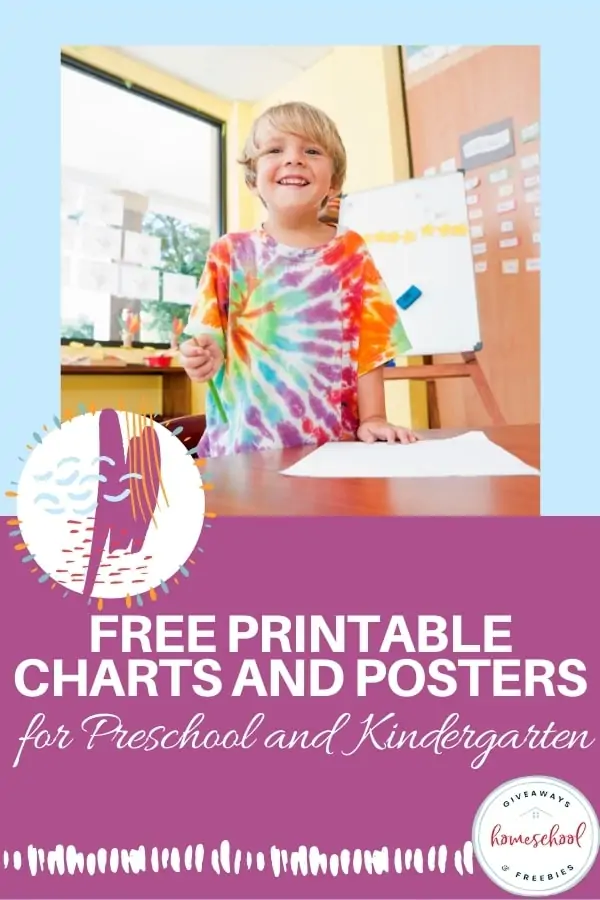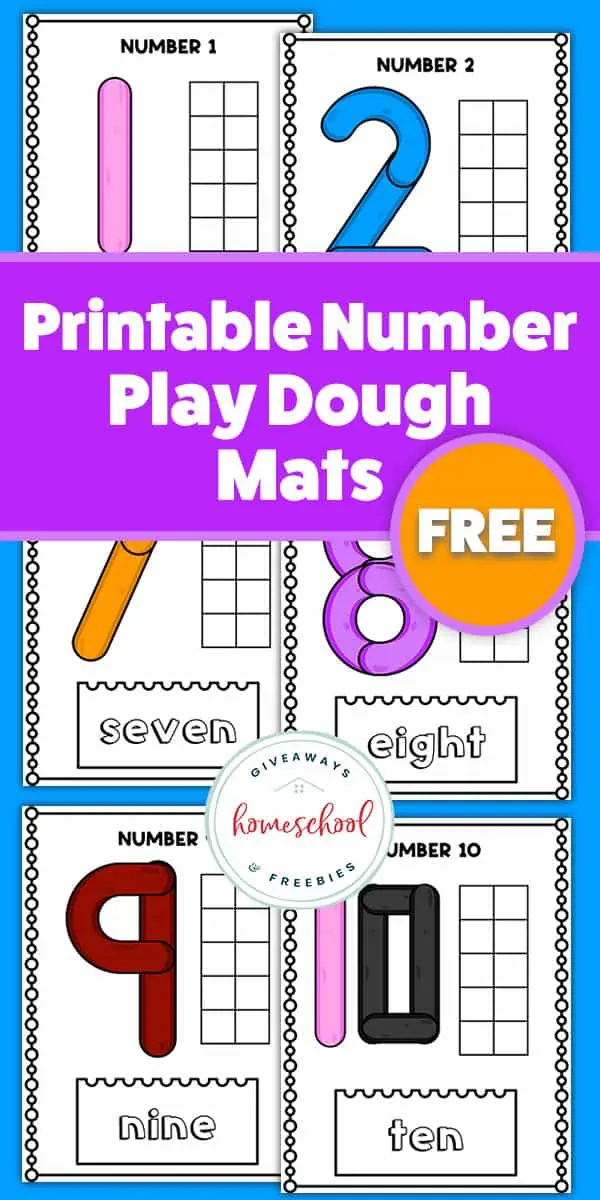The Importance of Teaching Phonics + 10 Ways to Teach It
Published:
December 29, 2023

Contributor:
Sonlight
Disclosure: This post may contain affiliate links, meaning if you decide to make a purchase via my links, I may earn a commission at no additional cost to you. See my disclosure for more info.
Phonics is a foundational skill and one of the most effective ways of teaching children how to read. Teaching phonics can also be one of the most stressful parts of homeschooling young children, especially for brand new homeschool moms. But it doesn’t have to be overwhelming! Here’s what you need to know about language development, the role of phonics, and 10 ways to teach it.
Why Phonics Is Important
In short, phonics is important in order to create fluent readers. It is the method used to teach students the letter-sound relationships in an alphabetic language. With phonics, we teach children that individual sounds in the English language correspond to particular letters or groups of letters. In this way, students gain reading skills and are able to read unfamiliar words because of systematic instruction in phonics.
What is Phonics?
Phonics is simply a method of teaching letter-sound knowledge so that students can read new words and unfamiliar words. Explicit phonics instruction can be contrasted to a whole word approach where students are taught to memorize the shapes of entire words. With a whole word approach, every word becomes a sight word. Word recognition is the goal rather than putting different sounds together to read unfamiliar words.
In contrast, phonics programs give students the tools to understand how words are formed in the English language. This gives kids confidence that they can figure out unknown words based on letter combinations and the alphabetic principle. This principle tells us that the arrangement of letters and sounds have a predictable relationship. Once children learn these phonics rules, they are able to read almost anything.
Why Do We Teach Phonics?
We teach phonics because systematic phonics instruction will produce proficient readers. There is an orderly and predicable way that English words are formed. A good phonics program will help you convey those phonics rules to your kids as you embark on the adventure of teaching your children how to read.
Why is Teaching Phonics Important?
Young children armed with phonics knowledge will be able to navigate through increasingly more challenging reading levels. Once kids understand that our alphabetic system has specific sounds attached to each letter or letter groups, then literacy skills will grow.
Here are 10 ways to teach phonics in your homeschool.
1. Building Strong Foundations
The role of phonics in phonemic awareness instruction can’t be overstated. You can build a strong foundation even with your youngest learners by teaching phonics.
One of the earliest phonics skills are phonemic awareness skills, which is just a fancy way of saying skills that allow a child to notice and work with the smallest sounds in the English language (phonemes). Reading to your children, saying nursery rhymes, and learning the letters of the alphabet are all basic beginner phonemic skills.
2. Enhancing Vocabulary
Vocabulary development naturally grows when kids learn phonics. When they are able to understand different parts of a word, including the root, the suffix, and the prefix, then phonics instruction enhances vocabulary.
3. Encouraging Independent Reading
Skilled readers know how to decode words. That means a student who has a solid foundation in phonics will be a more fluent reader and a better-equipped independent reader. Students who struggle with decoding words will naturally have a harder time with reader. Of course, you can still give your kids a strong foundation in phonics but have a struggling reader. In this case, look into other issues at play, including dyslexia.
4. Developing Spelling Skills
When students are taught phonics, they naturally learn spelling patterns along the way. This is one of the biggest benefits of a good foundation in phonics – that is, students understand spelling rules and are able to spell words correctly based on their knowledge of phonics.
5. Improving Pronunciation
Since phonics works with the smallest sounds, or phonemes, it necessarily works on correct pronunciation from the beginning. Students learn the appropriate sound for each letter or group of letters as they learn to read and spell.
6. Boosting Reading Fluency
Learning phonics helps to boost reading fluency in children. The most successful readers are those who have a solid phonics foundation.
7. Ensuring Reading Success
Phonics is the best way of teaching children how to read and it does ensure reading success. A good reader knows how to approach new words with a systematic phonics approach.
8. Enhancing Critical Thinking Skills
The study of phonics concepts teaches basic logic. As students are able to pull apart and manipulate parts of words, they begin to be able to analyze and exercise their critical thinking skills.
9. Supporting Multisensory Learning
One of the best parts of teaching phonics is that you can teach it in a very multi sensory way. That means that your kids can be taught in a way that is engaging for them, whether they are auditory, visual, kinesthetic, or tactile learners. Phonics lends itself to all of these approaches, making it a great fit for all learning styles.
10. Empowering Independent Learners
With a whole language approach, children are dependent on the adults presenting words for them to memorize and learn. But with a phonics-based approach, you are able to grow independent learners. Before long, even your young children will be able to read multisyllabic words just because they know the phonics rules.
How Do Children Learn Phonics?
Children learn phonics at an early age with an introduction to their first sounds. As parents talk to their children, read rhymes, and read stories, children are growing in their phonological awareness. Phonics starts with sound. But then phonics moves toward introducing letter symbols and which sounds are connected to each symbol, whether it’s a single letter or group of letters. Phonics in the early years looks like plenty of read-alouds as your children gather the phonemic awareness they need.
When to Start Teaching Phonics
You’re probably wondering when to start direct instruction in phonics. Kids are usually ready for phonics lessons when they’ve learned to identify all the letters of the alphabet. This is usually between the ages of 3-4 years old. But don’t worry if your child is not ready until five or later for an official phonics education! Reading goals for kindergarten include:
- letter-sound recognition
- sight words
- left to right
- reading comprehension
- fluency
- vocabulary
- phonemic awareness
Phonics Curriculum
While you may agree on the importance of phonics in a child’s education, it can be hard to find the right phonics curriculum for your family. Sonlight Phonics Curriculum can be used alongside their All-Subjects Packages or as stand-alone resources. With Sonlight Phonics and resources like Explode the Code, you can be confident that your children will get a solid foundation.
10 Ways to Teach Phonics
Here are some fun ways to teach phonics to your kids, no matter which curriculum you end up using.
1. Letter Sound Puzzles
Many phonics resources for kindergarten include letter sound puzzles. These fun activities challenge children to match up individual letters to pictures of words that start with that letter. For example, your child would match the letter B to the picture of the bumblebee.
Phonics charts provide another helpful resource for kids to begin to associate the correct letter with the right sound.
2. Phonics Apps and Games
Phonics apps and games take the same tried-and-true activities into digital form. Now instead of matching letters to pictures or playing with wooden puzzles for this type of learning, kids can play directly on an online learning app to learn phonics. It makes a great on-the-go resource.
3. Phonics Songs and Rhymes
Grab some printable phonics books and phonemic awareness activities for your early readers to begin to learn phonics through songs and rhymes. When kids can start to hear rhyming words and word families, they’ll pick up on phonics much quicker. Your kids are never too young to learn phonics songs and rhymes that will help grow their phonemic awareness naturally.
4. Word Building with Magnetic Letters
Kids love word building activities, especially if you use fun tactile tools like magnetic letters. Grab some phonics sound cards and use them with some hands-on consonant blend activities and a set of magnet letters.
5. Sight Word Hunt
One of the different ways you can teach phonics is to create a sight word hunt around the house or outside. Create a set of cards with one sight word on each card. Hide all the cards around the house or in the yard. Let your child hunt for the words. When he discovers a sight word card, have him read the word. You can play so many variations of this simple sight word hunt game!
6. Read Aloud
You can teach phonics to young readers by simply reading aloud. Don’t underestimate the value of giving your kids a solid phonics foundation through simple read alouds.
7. Picture Sorting
Picture Sorting is an engaging hands-on activity that will help your pre-readers to gain a great phonics foundation. Kids can sort pictures based on the beginning sounds or rhyming words. Picture sorting is a great activity because you can use it with your kids who are not reading yet. It’s one of the first phonics activities to try with your littlest learners.
8. Alphabet Scavenger Hunt
An alphabet scavenger hunt is a simple, no-prep activity to teach phonics. Simply go around the house and try to find something that starts with each letter of the alphabet. For younger children, call out a letter and see if they can find a matching object. For older kids, you can print out the alphabet and have them cross out each letter they find.
9. Phonics Board Games
You can find phonics board games that you can print out and assemble or look on Amazon for some great phonics games. Of course, using Scrabble tiles or playing Bananagrams is another exciting option.
10. Word Families
Kids with strong phonics skills understand word families. Help your children learn how to use word families to create new words. For example, a word family might end with the letters “at.” Help your kids see how changing the first letter will give them dozens of new words – cat, bat, pat, sat.








